Five Fits With: Restauranteur and Menswear Enthusiast Brooks Reitz
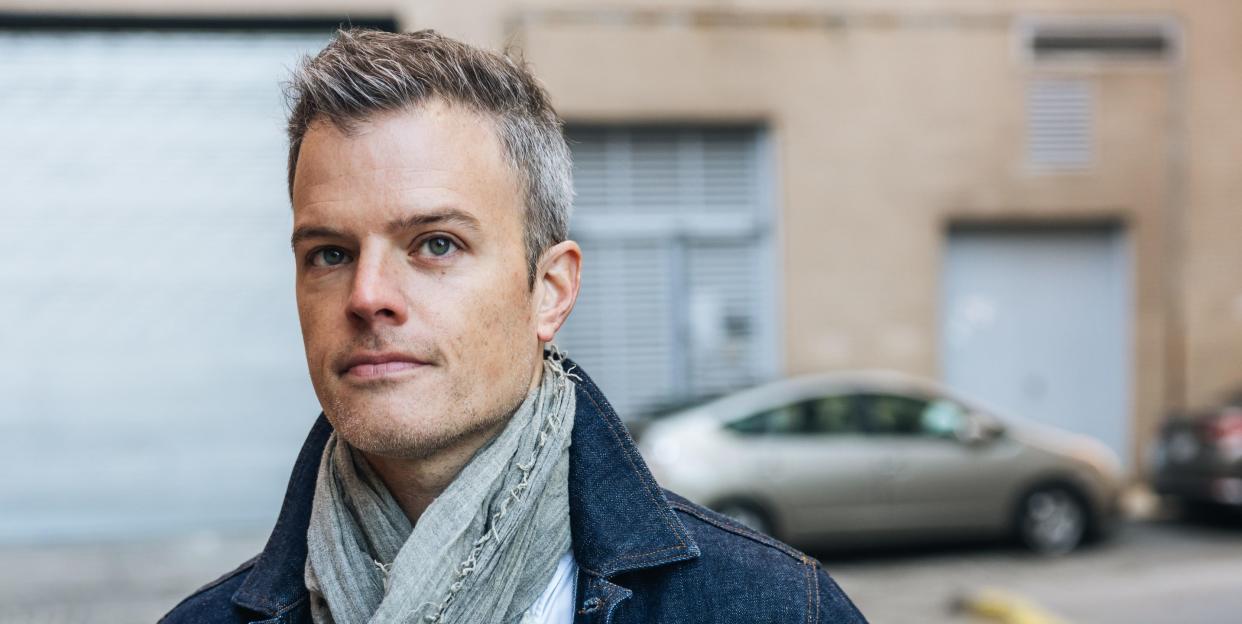
If you’ve been to Charleston, you’ve probably been to Leon’s Oyster Shop, Little Jack’s Tavern, or Melfi’s. The common thread with those local mainstays is their owner and this week’s subject, Brooks Reitz. Reitz is a menswear enthusiast, which is how we came to know each other. He’s also a partner in his wife’s high-end shirting brand E.M.Reitz. To say he is busy is an understatement, but he finds himself in New York quite a few times a year, so we met up a couple of weeks ago to catch up and photograph this piece.
Below, Brooks and I discuss how his Kentucky foundations, the inherent theater of Balthazar and restaurants of that ilk, what he values in a memorable dining experience, the contents of his weekly Substack newsletter, the joy of 45RPM sweatshirts, the timelessness of RRL chinos, and plenty more.
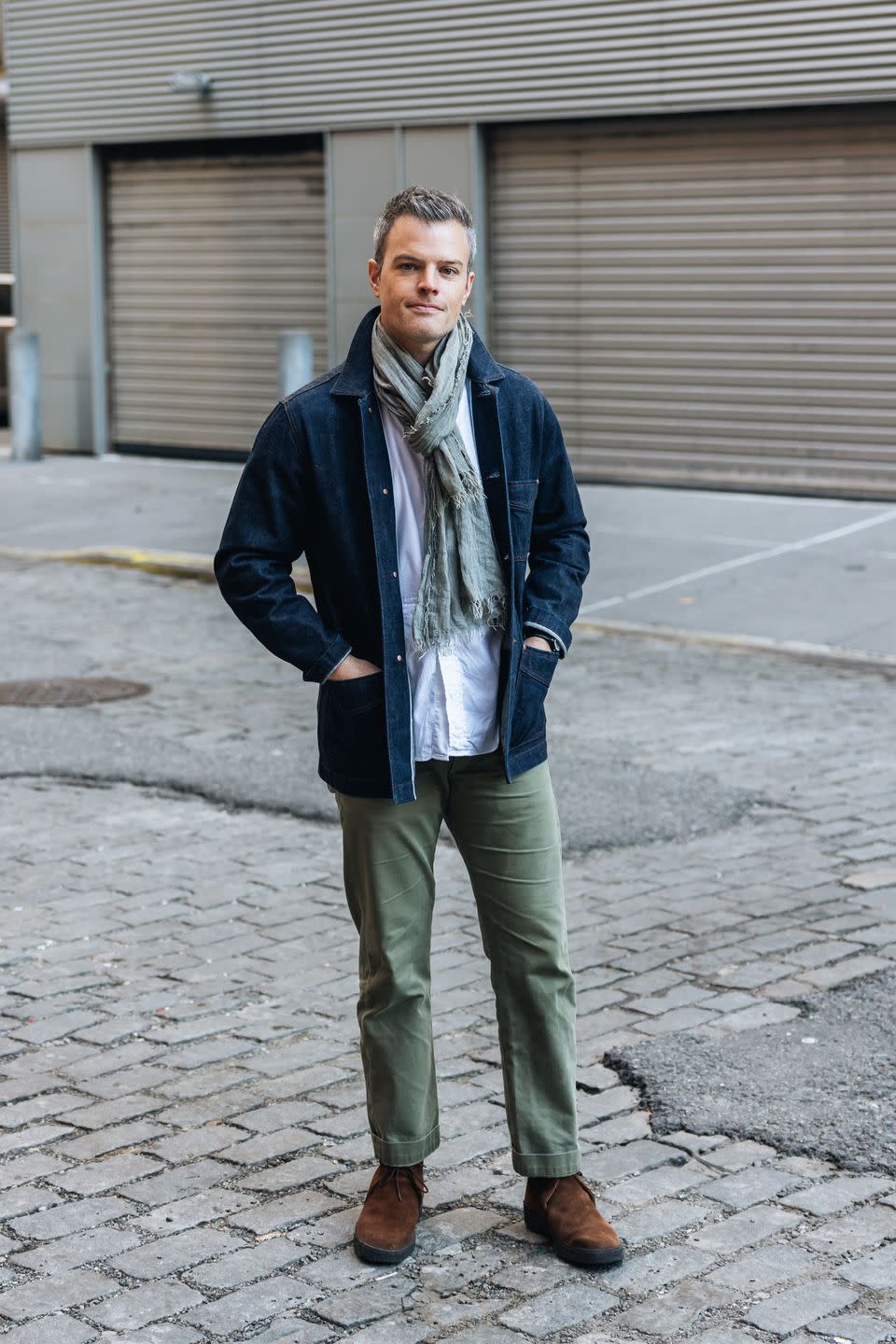
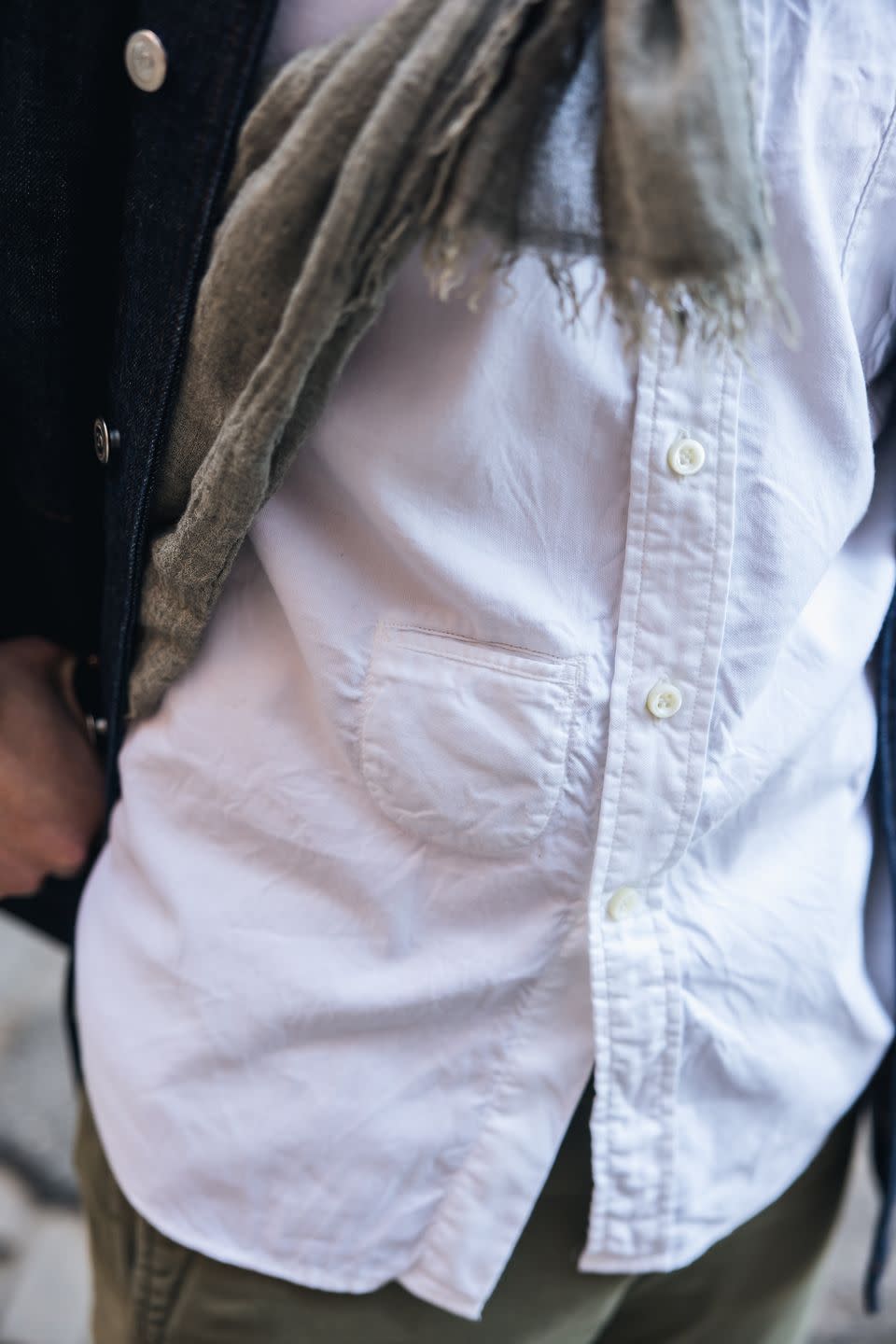
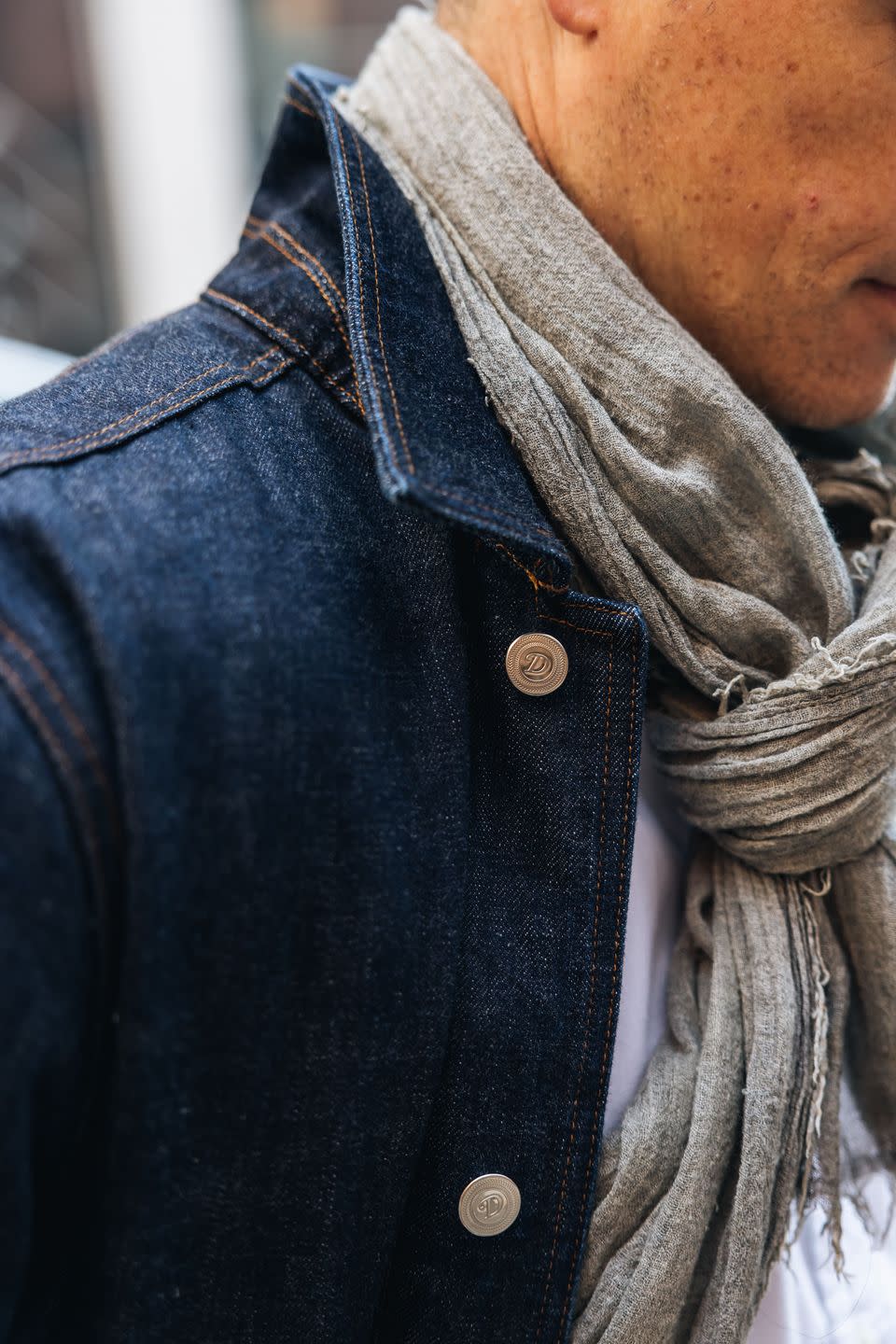
Which companies do you currently own? What was your journey like, all the way from childhood and schooling to now?
I own three restaurants in Charleston, South Carolina: Leon's Oyster Shop, Little Jack's Tavern, and Melfi's. I have a cocktail mixer and bar accessories company called Jack Rudy Cocktail Company that's about 12 years old. And then I'm a partner in my wife's new clothing line, which is really focused on high-end women's shirting; that's called E.M.Reitz. My journey started in Kentucky where I was born and raised. I grew up on a big farm there. And I think growing up in the country is what created my insatiable urge to be engaged with culture and come and visit cities like New York.
I went to college in Kentucky at a liberal arts college, and studied English and drama. My intention was to be a playwright, and I still write. That all changed with my first trip to New York City when I was 19. I went to Balthazar, and walking into that room, I realized that a restaurant had the capacity to also be theater. Balthazar [feels like a] stage set. The lighting is very different. There aren’t a ton of windows and it's a whole symphony of things that Keith McNally has orchestrated. It helped me realize I could take my interest in writing and theater and world-building, combine it with my love of food, and open a restaurant. When I was about 19 or 20, I decided to commit myself to this path of working in the restaurant business. I finished school and moved to Louisville, Kentucky, where I got a job working at a restaurant and worked my way up to general manager. Then I moved to Charleston at 24 and got a job at a restaurant that had just won the James Beard Award, called Fig. I wanted to work in that kind of environment at that level. While I was working for those guys and managing that restaurant, I started Jack Ruby, which grew to be a successful brand over the course of those first several years. The success of that business is what allowed me to leave those restaurants and open a place of my own, which was Leon's.
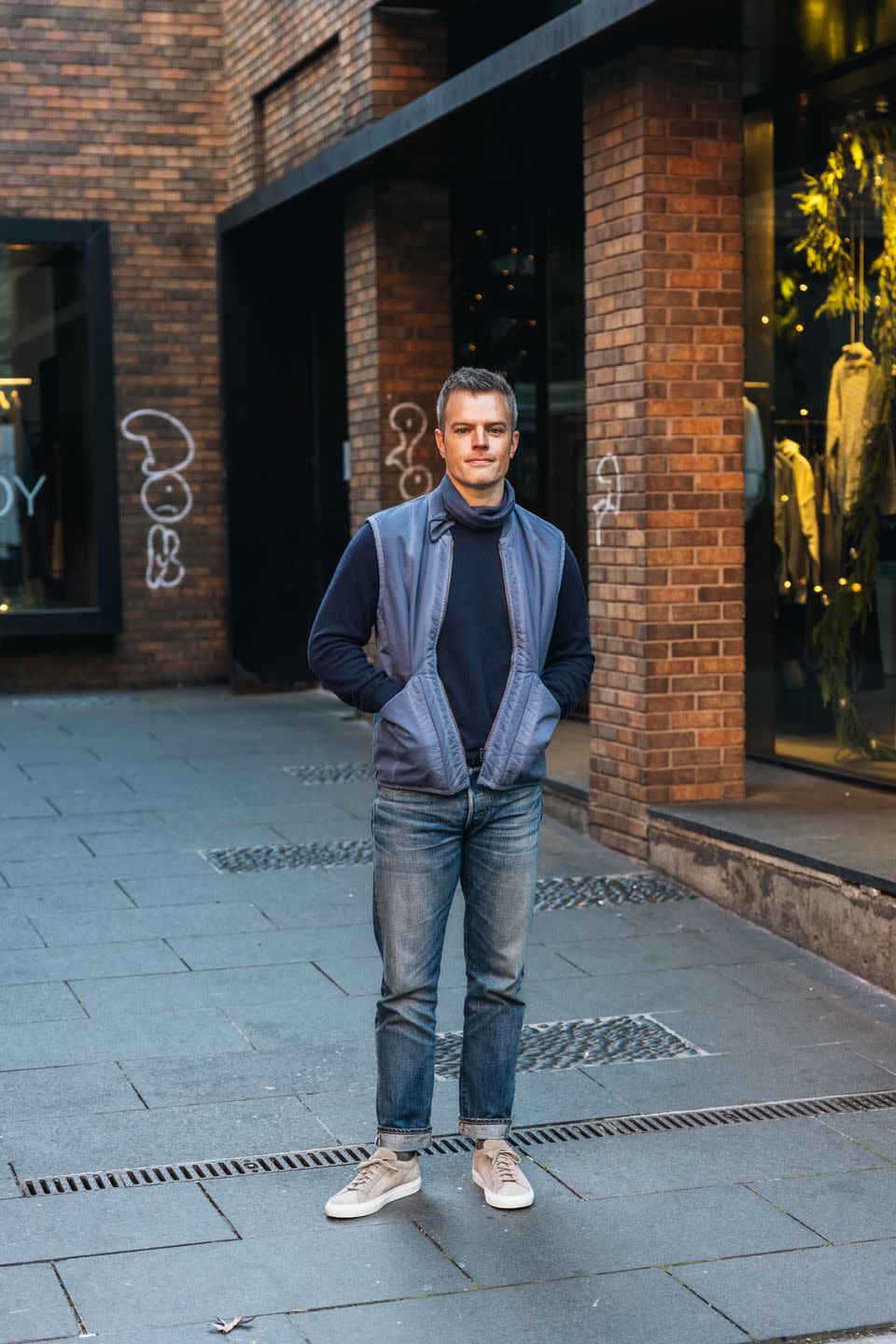
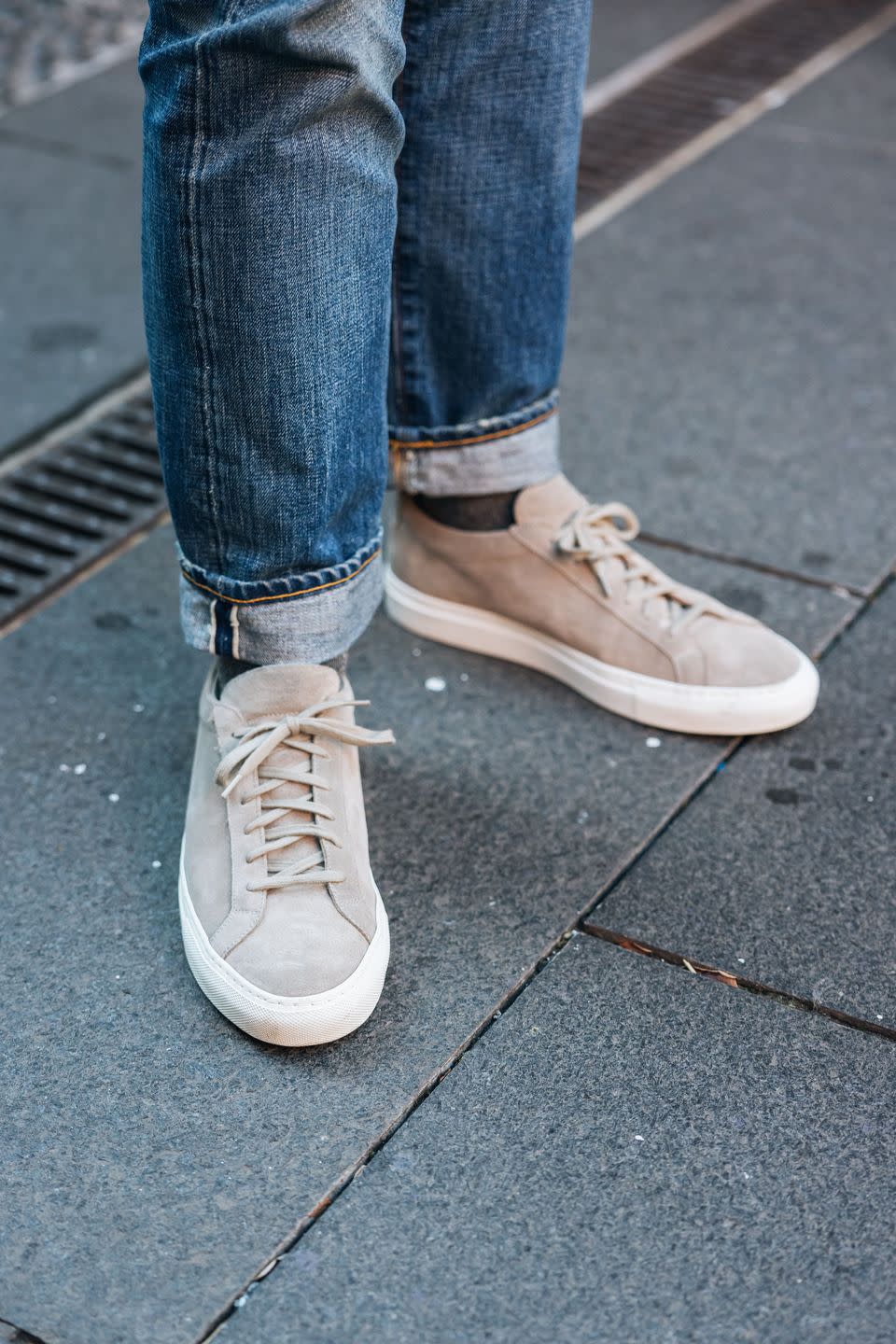
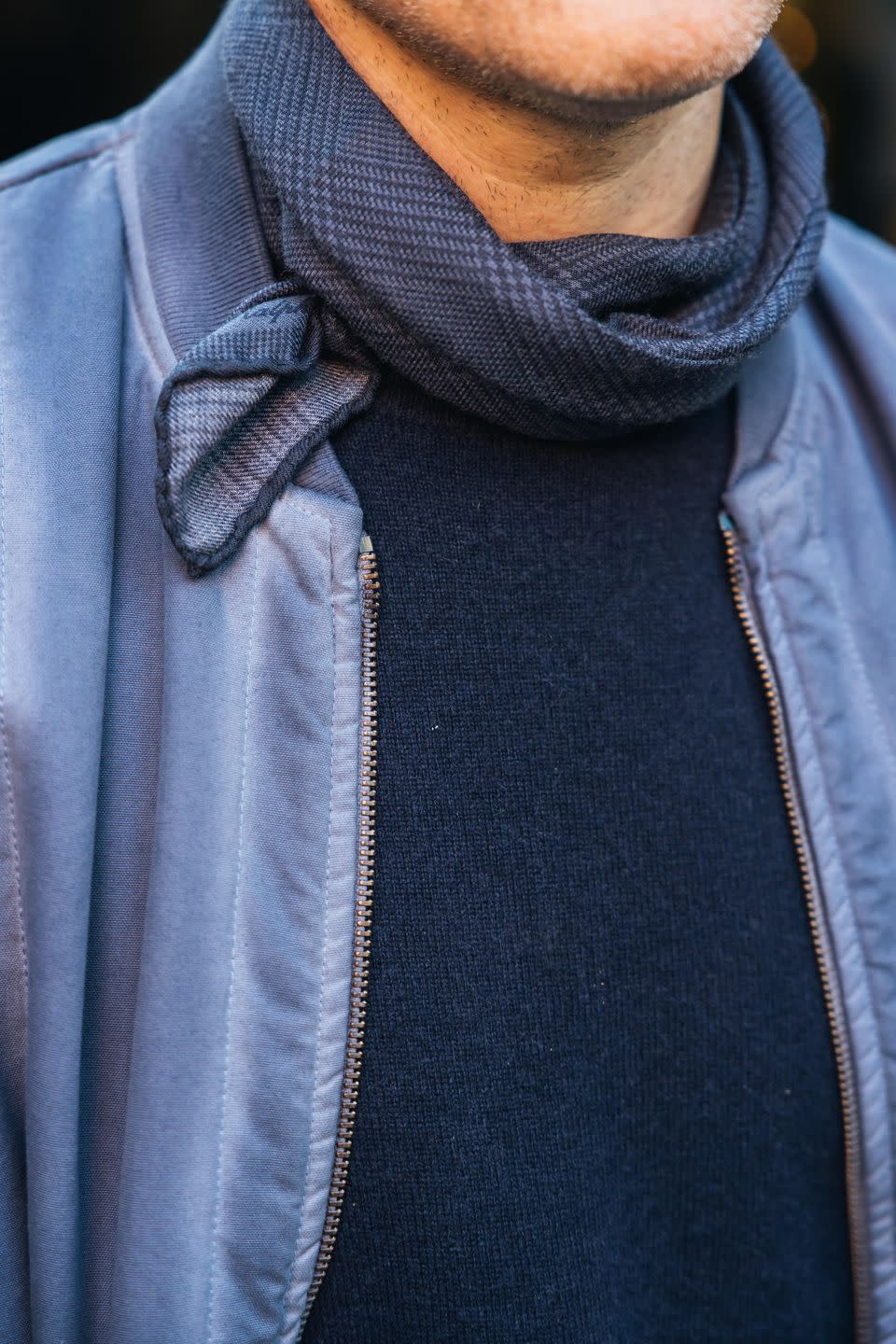
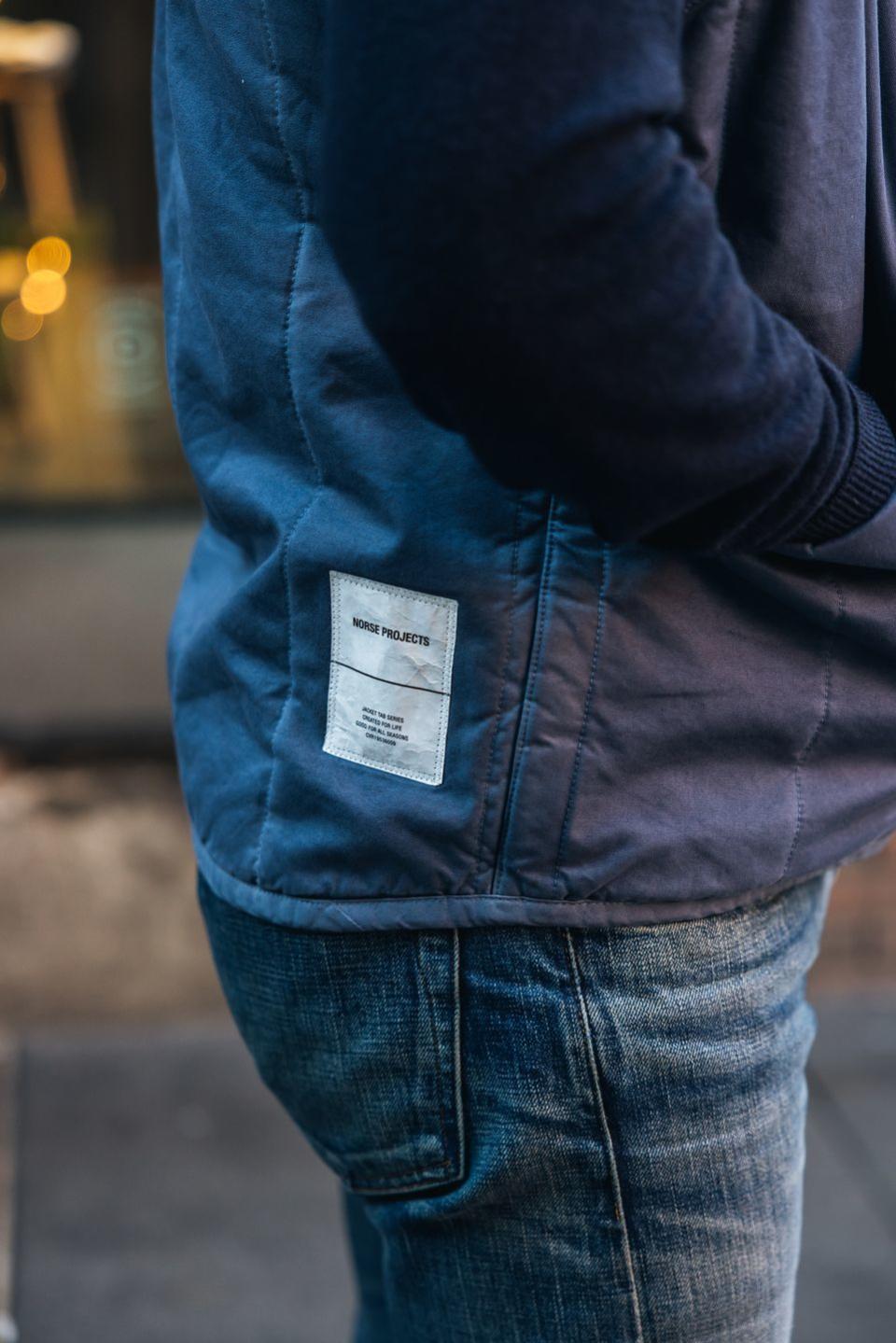
What makes for a special dining experience? And then what are some of your favorites?
A great dining experience is about so much more than the food. It’s a blend of a lot of different elements. First of all, it's the people you're with and the energy at the table, whether that's your wife or your husband or your friends, new or old. I think the most memorable dining experiences start with that energy exchange. The food needs to be great, of course, but there are a lot of places that have great food and zero vibe. I'm big on vibe and the warmth of a place. I think that's created through lighting and through music choices. A big part of it is decor. And I think when you get all of those pieces coming together—the energy at the table, great food, good wine, the feeling in the room, the buzz in the room—those are my most memorable experiences.
One of my favorite restaurants in the world is St. John in London. Fergus Henderson is of course a super famous chef, heralded for his use of offal, but what I find so amazing about St. John is the room is actually quite industrial and pared down. It's a simple, white room with no decor on the wall other than places to hang your coat and simple wooden chairs and tables. There is a buzz in the room that, to me, captures London. The food is great enough to be interesting and a talking point, but not so overwrought that it becomes fetishized. It's still simple, great, beautiful cooking. And I would say that's one of my all-time favorites.
I love a high-end, curated experience. If you go to Le Bernardin, it's a perfect experience and I love it. But a lot of those [fine-dining] restaurants, there is a sort of fetishization of the chef and of the food on the plate, and it comes at the cost of the connectivity at the table that you're trying to have. I would honestly rather go to a place with worse food and a great energy than a place with the best food and that sort of overly considered energy.
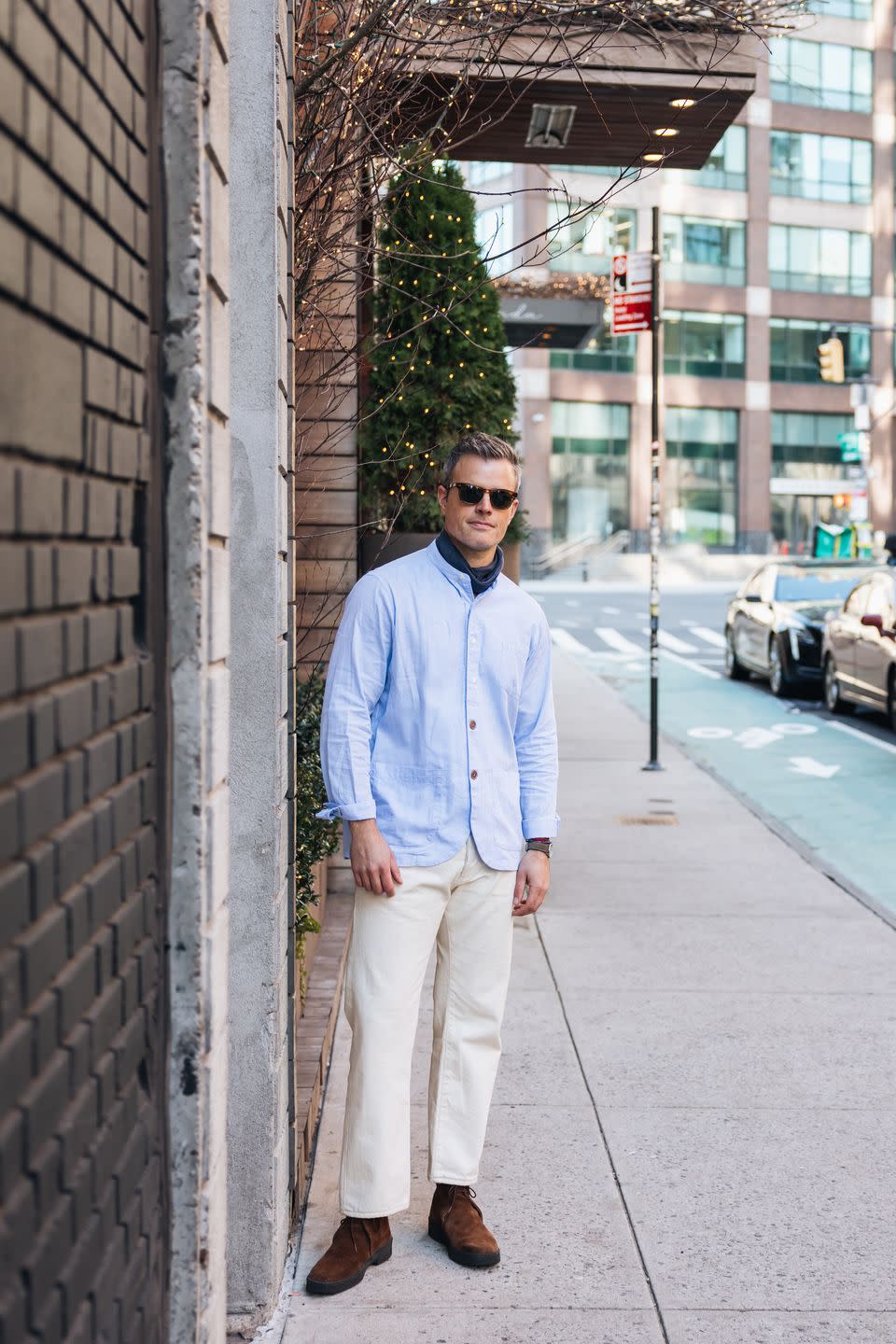
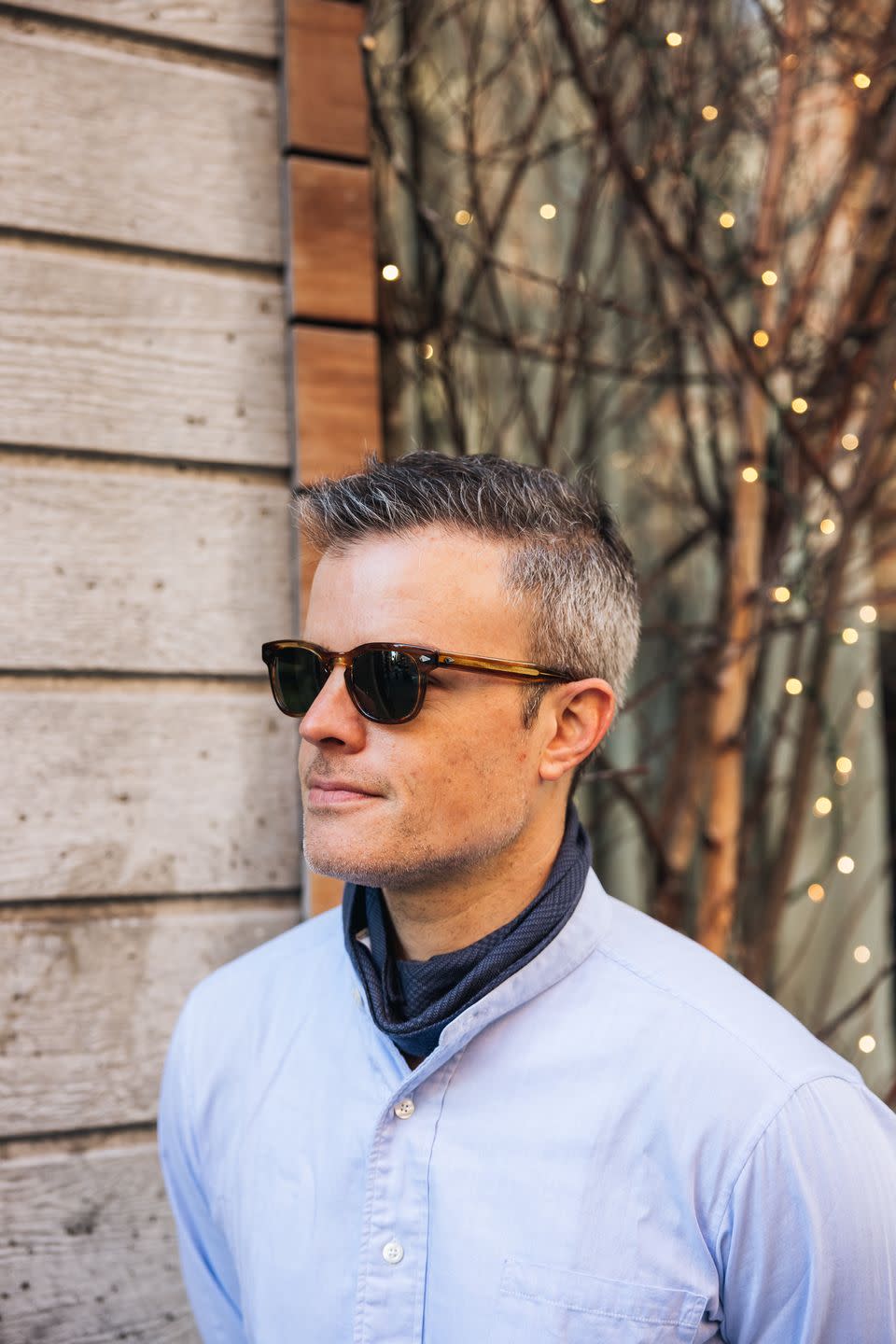
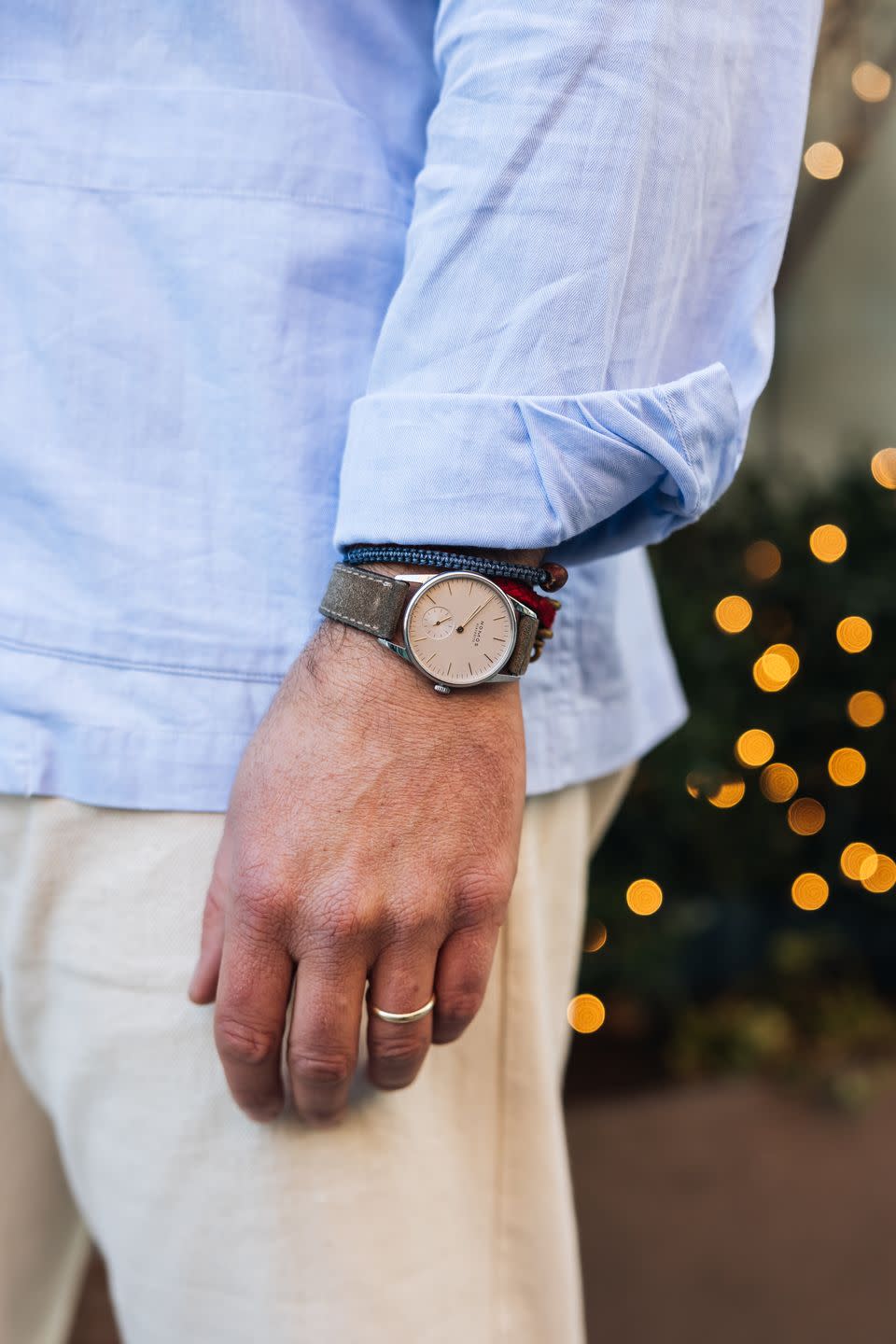
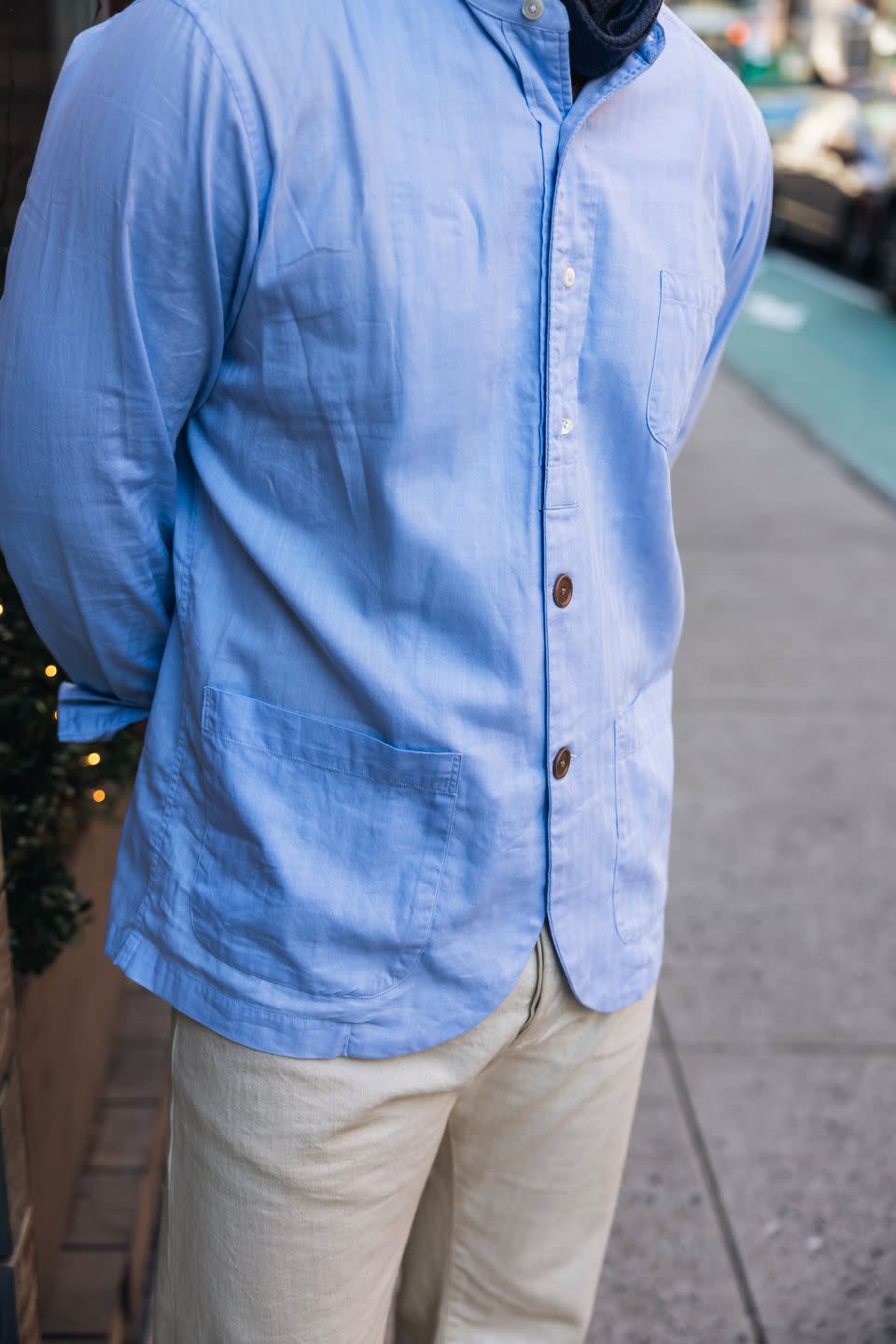
Why did you start writing a newsletter and what sort of content can one find there?
I started a newsletter during the pandemic because I was bored and needed an outlet for my creativity. I also felt like the things that I was interested in—food, design, clothing, travel—I was having a hard time finding them all under the same roof. For years, for better or worse, I've served as a resource for friends and family and acquaintances to guide them in a direction. I had enough of those questions that I realized even though there are great resources out there, clearly there was a community and an audience that was looking to me for some of this information. I wanted to capture it all and put it under one roof. It had been several years since I had been writing regularly, and that was my first love. I wanted to find a reason to create again and share that with people. Obviously Substack became such an interesting opportunity to also monetize some of that information. I'm still writing it. I publish every Monday. I would say it's about 60 percent food and the rest of it is made up of travel, style, shopping, and the other various interests that I have.
What does style mean to you, and how do you incorporate it in your restaurants?
Style is just a point of view on the world. You can tell that story or share your point of view through any number of choices you make. Obviously a huge one is the clothing that you wear, and I think it transmits a certain message about who you are, what you believe, and how you experience the world. Style goes well beyond clothing. It's music, it's manners, it's relationships, it's your value set.
I incorporate style into my restaurants in so many ways. I literally view every touchpoint that a customer is going to engage with as an opportunity to tell the story stylistically of who we are. That's from the glassware to the napkin, to the silverware, to the plate, the table, the table base, the chair, the stain on the walls, the light fixtures, the playlists. That’s why I love the restaurant business. It's creating; it’s the world-building that we do when we're opening a restaurant. Operating them is an unfortunate byproduct of owning restaurants. The best part is creating the world, telling the story, and making those style choices. The sound you're going to hear and the vibe you're going to engage with when you walk into Little Jack’s is very different than the music you're going to hear and the uniforms and the choices we've made when you walk into Leon's. Those are all style choices that we've made to communicate to our customer, "This is who we are, this is what we're about, this is the world you're entering." I love that stuff.
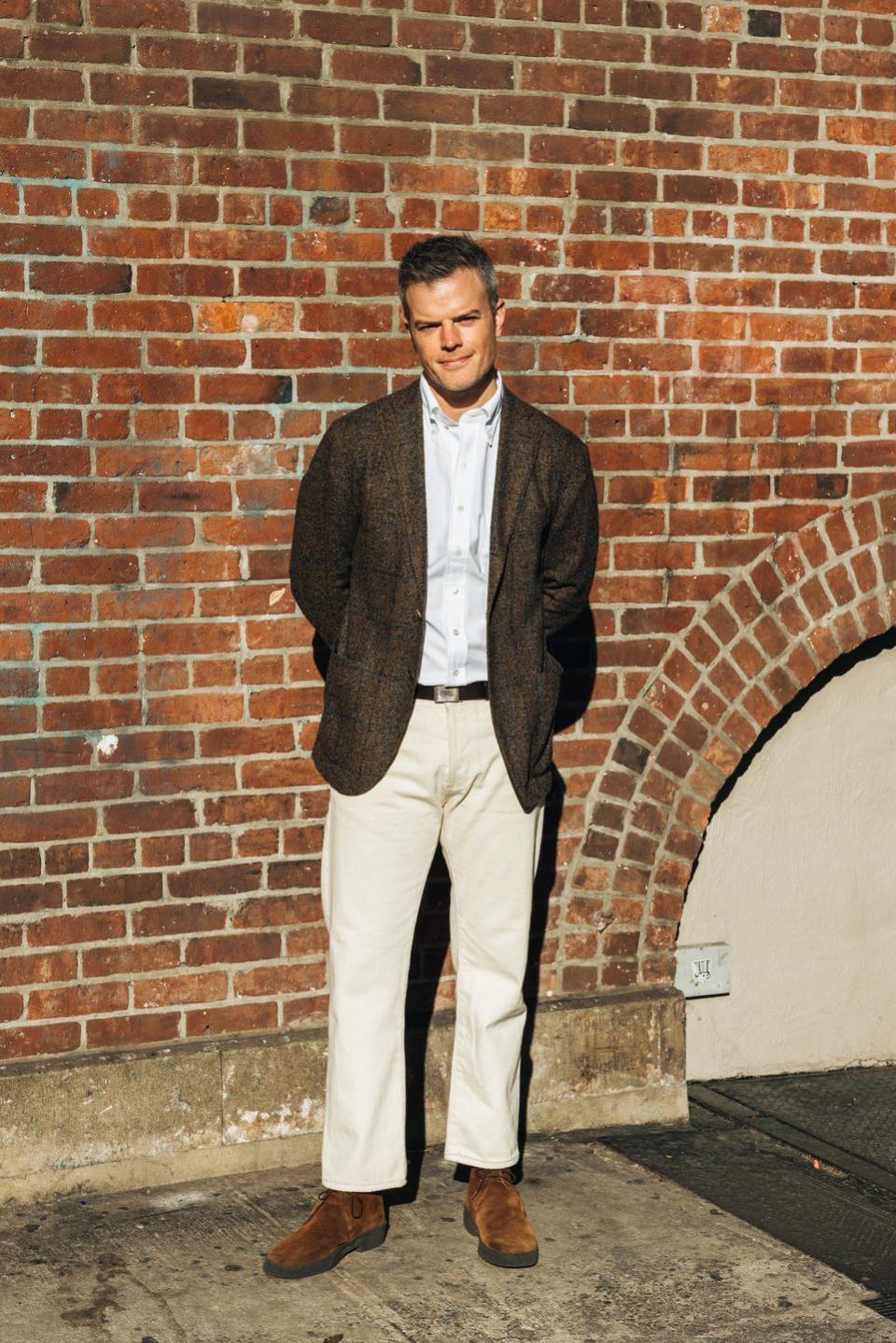
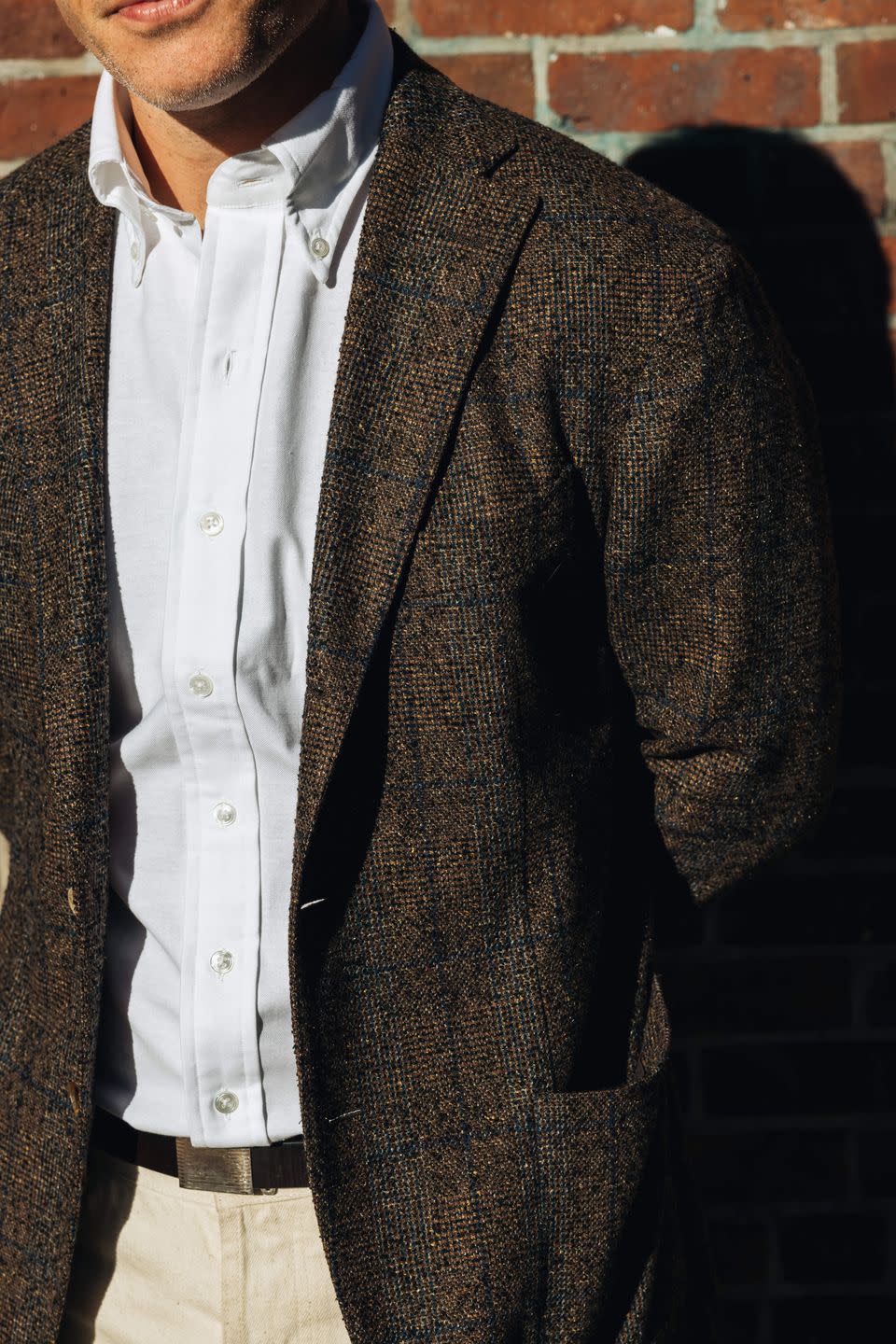
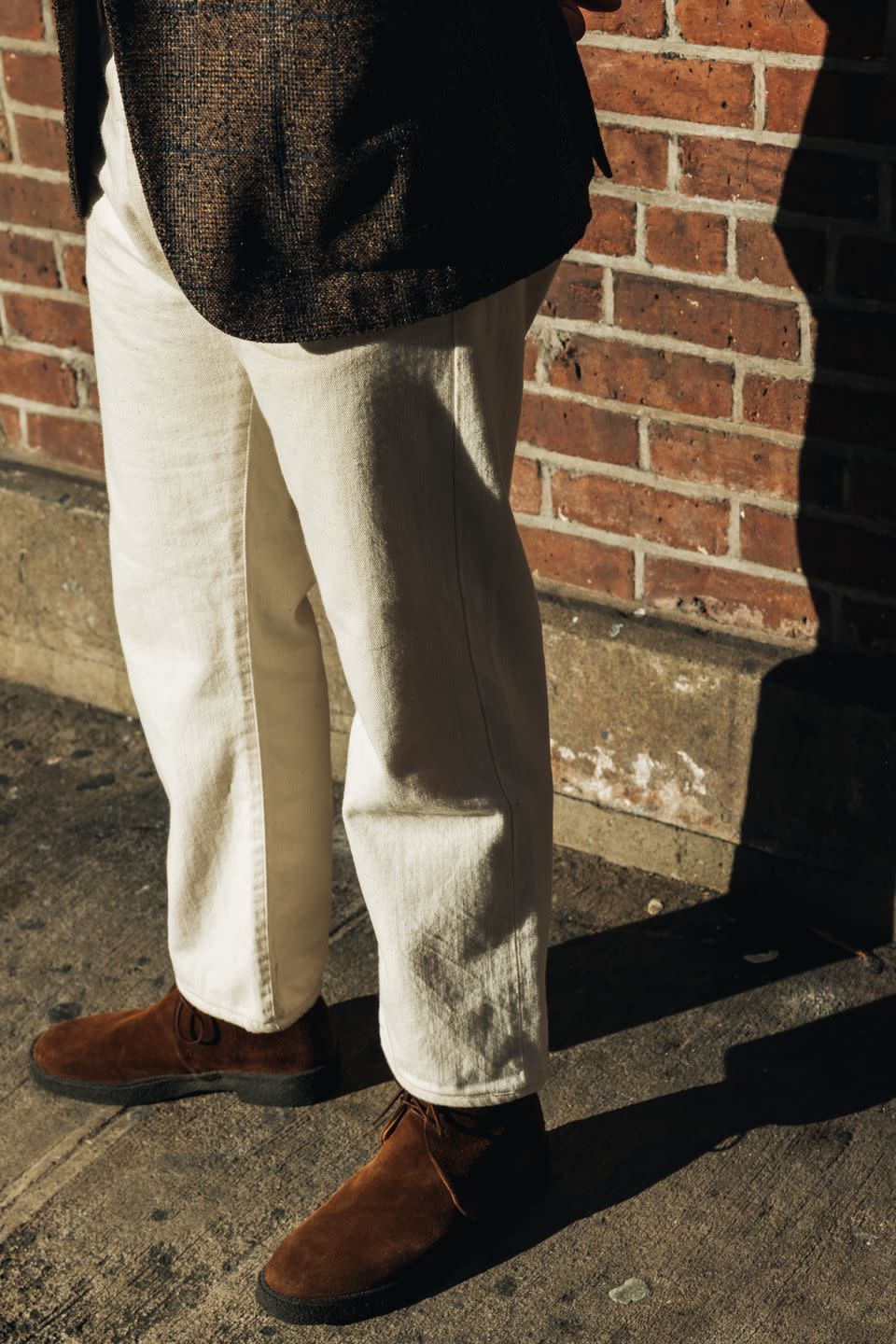
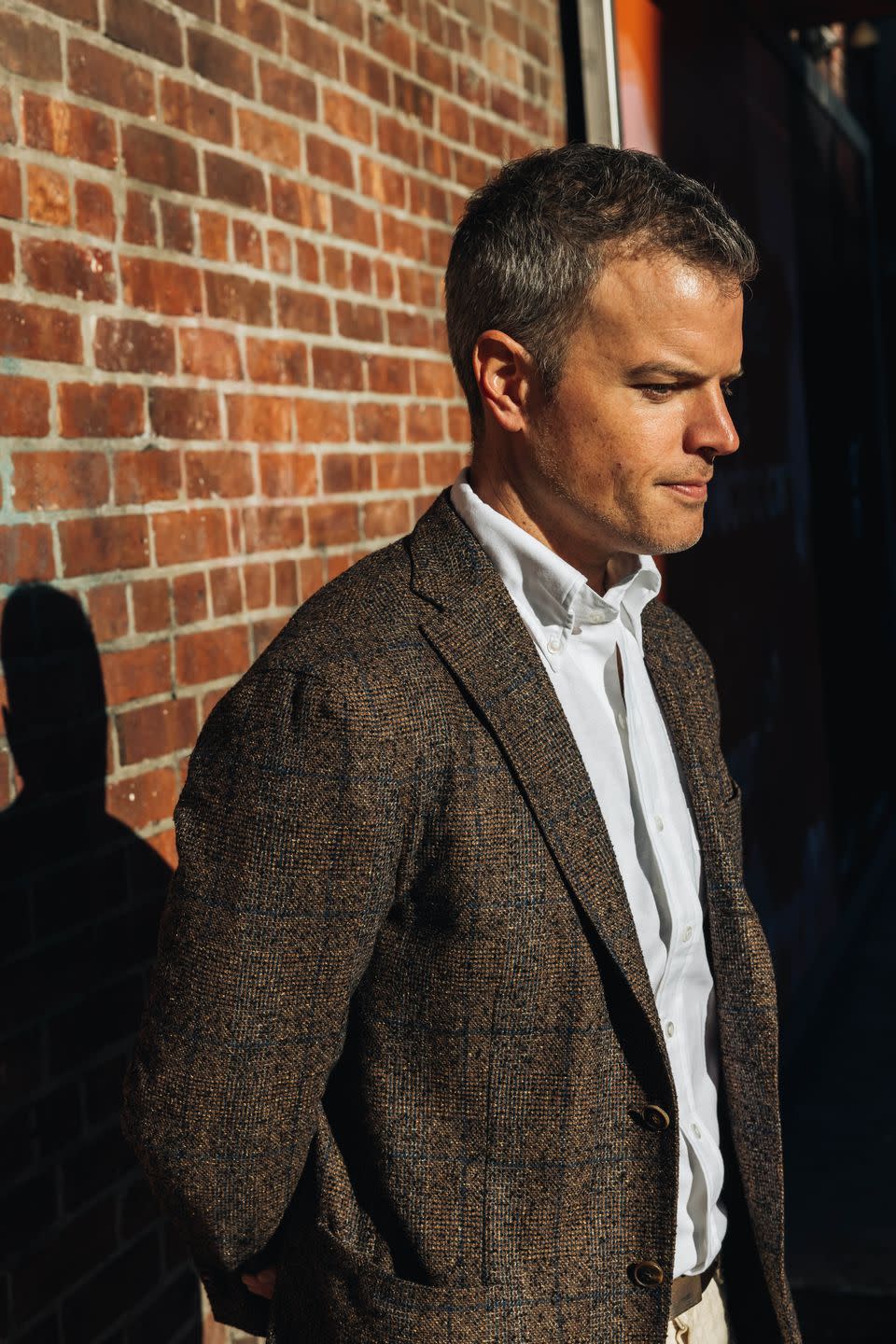
How did your own personal style journey begin?
My dad was a well-dressed guy. He was an insurance salesman, and so he wore suits to work every day. He loved Brooks Brothers. I think as anyone's journey begins, it's seeing what your parents wear and the way they commune with the world. My grandmother and great-grandmother were huge style influences on me. They're the ones who took us back-to-school shopping every year, and they were very much about classic preppy American style. They always wanted us to tuck our shirts in, wear a belt, have nice shoes—the kind of foundational "rules" that I learned. [When I was a teenager] I started to find my own input of influence, which came from music and bands that I loved. It came from watching skateboarding videos and movies, listening to hip-hop. It became a sort of melting pot. All those things are evident today in the way I dress. I still consider myself a preppy dresser, but I've started to enjoy throwing a little bit of a kink in the mix to just keep it interesting.
That’s probably a good way to go through life. What was the first big item you remember purchasing and what's the thing you've most recently purchased?
Well, I coveted Air Jordans when I was growing up, but my parents, rightly so, were both frugal. There was never a chance they were going to buy me a pair of Jordans, so I never had them until I became an adult and bought them on my own. I think the first big purchase I made was probably a Boglioli jacket, a sort of unstructured blazer, which I still have and I love. It’s a heavy cotton twill in navy, really unstructured, super wearable and perfect for Charleston. That was the first time I had spent a thousand dollars on an article of clothing, which was a huge sum of money.
What age were you?
I probably bought that jacket eight years ago, so I was 30, probably.
I'm trying to orient someone reading this—you weren't a crazy 22-year-old.
Before that, through my twenties, I had one Polo Ralph Lauren sport coat that I wore to fucking shreds, and it was given to me by a customer. I loved it so much. I think having that jacket is what helped me understand the power that a nice piece of clothing can have on your confidence. It was really a suit of armor and every time I put it on, I felt protected. I still get that feeling, which is what I love about great clothes.
My most recent purchase would be what I'm wearing right now, which is this special piece from 45RPM, which is a Japanese brand that I love and we visit every time we come to the city. This is actually a really special piece to celebrate their 40th anniversary. It is a patchwork shirt, effectively like a quilted sweatshirt, but each panel was sourced from a different master indigo dyer in Japan. I saw it and thought, "That's not only a super comfy sweatshirt, but it's a work of art." My wife being in the clothing business has helped me also see clothing not just as an item that hangs in your closet, but as something that is a work of art. The craftsmanship of these pieces is what I really respond to. And this is not like anything I own, but the moment I saw it was just…I engaged with it and it resonated with me.
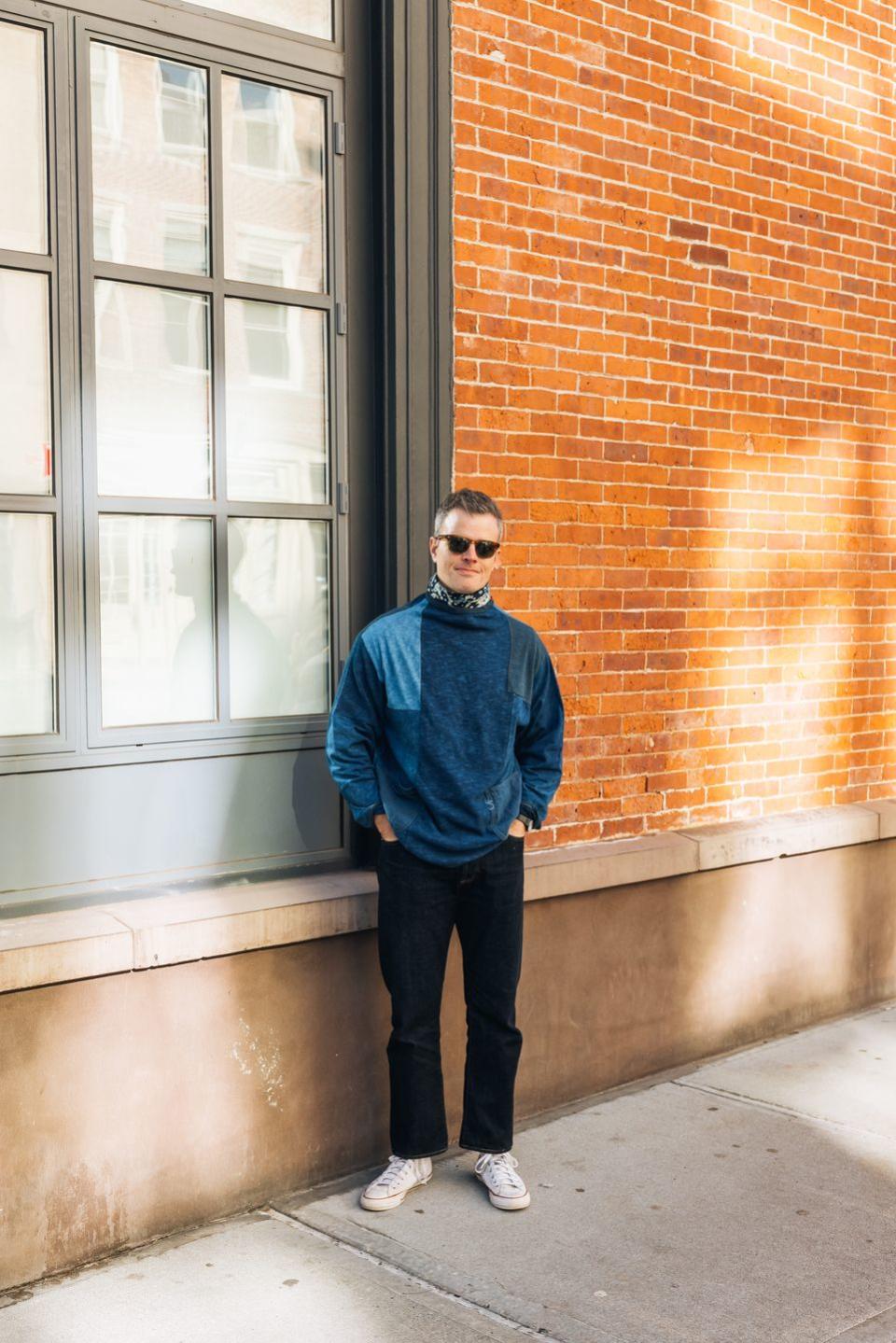
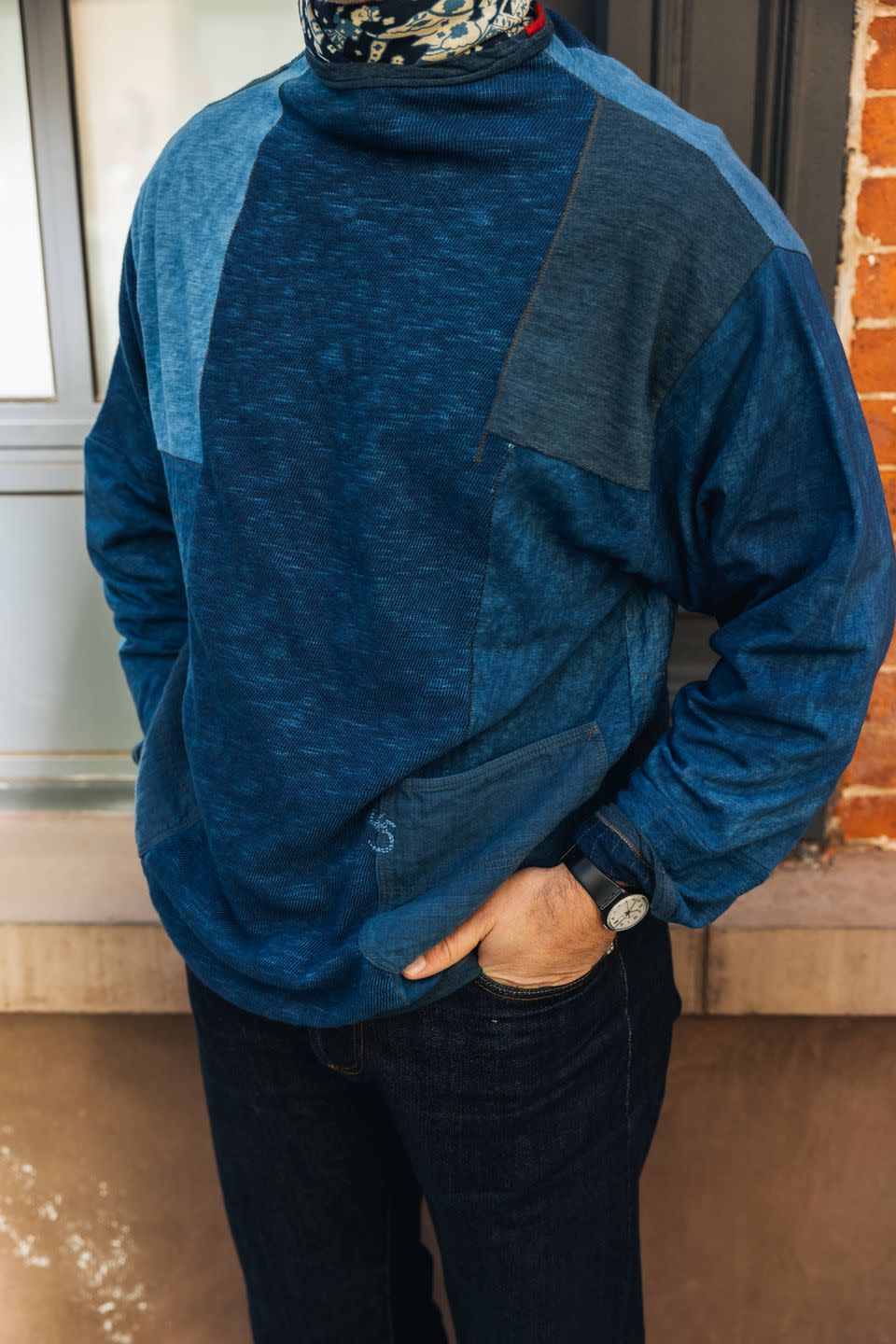
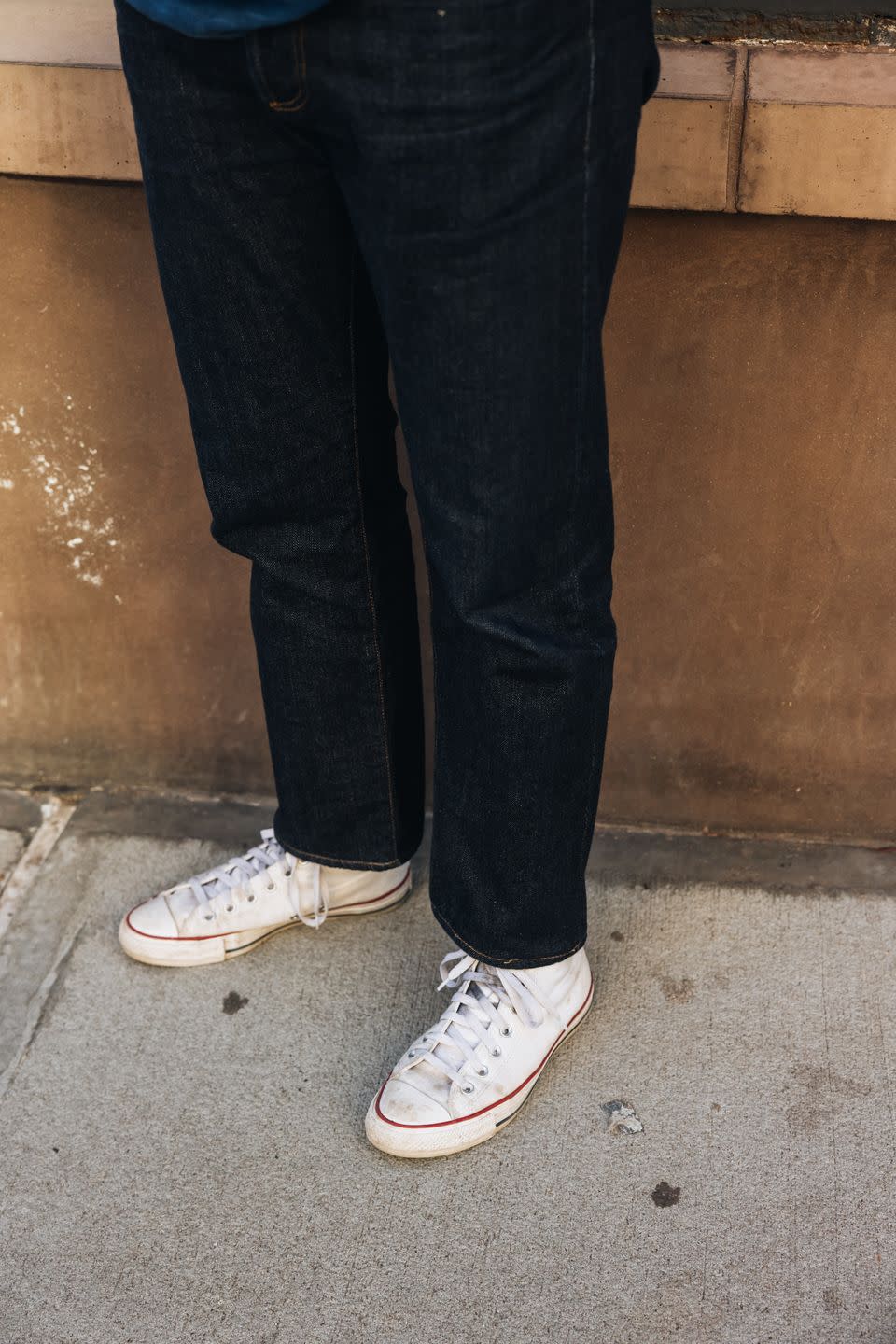
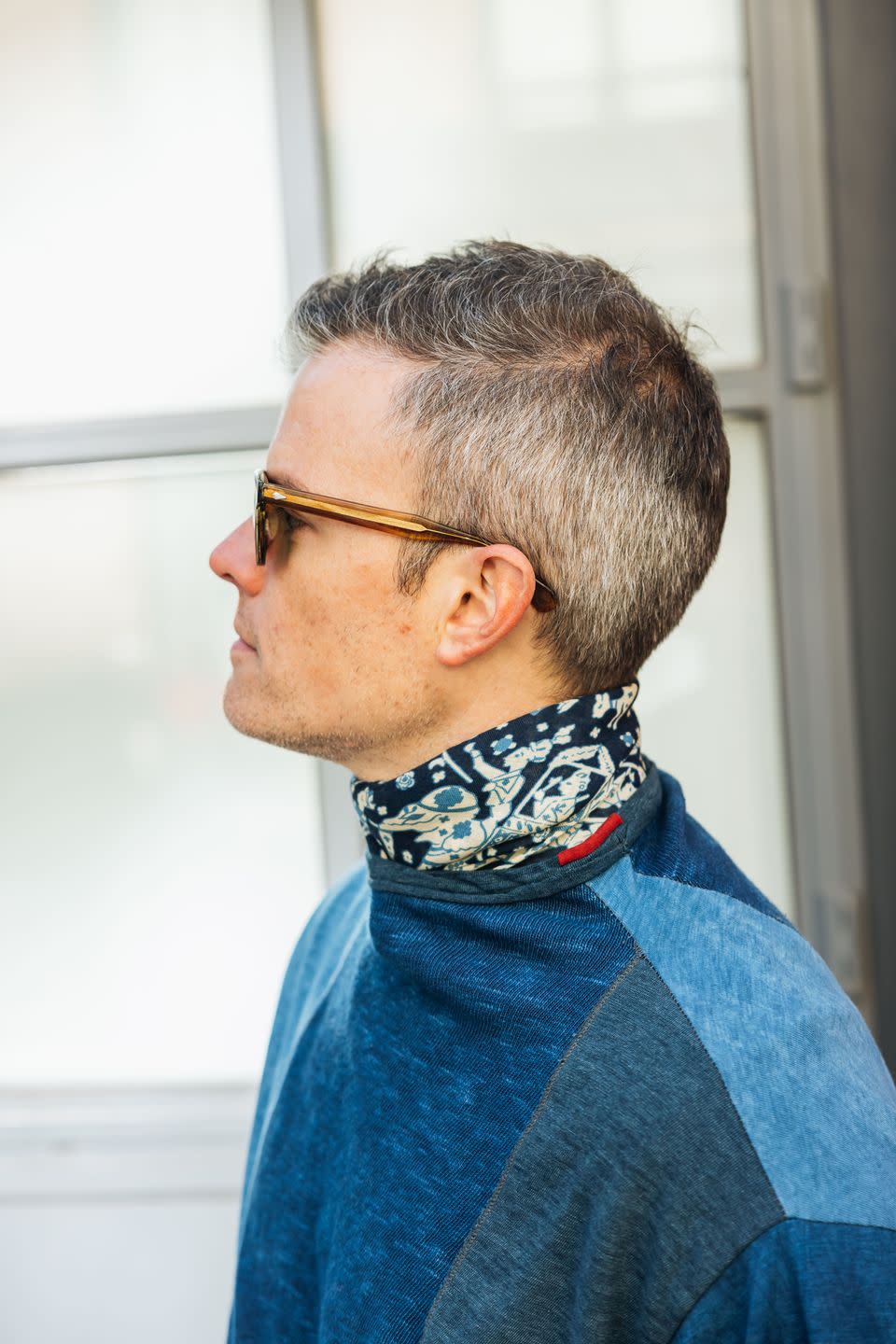
Do you have any favorite brands and why?
My go-to brands are brands that are relatively trend averse, like RRL. There is a bit of a country element to RRL, and there's a durability that I really like. It's a brand that gets better with age. I love Officine Générale. Just to rewind a little bit, generally because I live in Charleston, there are opportunities to dress up, but it's still a beach town at the end of the day. There's a casualness that's threaded throughout Charleston, so the brands that I'm looking for are usually brands that are casual—like sportswear, but I want there to be an elegance and a quality about them. Sid Mashburn, I love for his dress shirts. I love Drake’s. Everything Ralph Lauren does is appealing to me. And then there are some specialty brands that I've peppered in through my wardrobe, but they don't make up a huge amount. 45 RPM. Noah I really love as a company, even though I don't have a ton of pieces. And then just the specialty brands that I might find at men's wear shops, like CHCM, which you turned me onto.
What lessons have you learned from owning your own businesses that you can pass on to the Esquire reader?
In business, keep it simple and don't overthink it. Sometimes people can get caught up, especially in the restaurant business, trying to pack too many ideas or too many big ideas into one parcel. We've found success by keeping it simple, keeping it classic, and thinking about the importance of a broader appeal. As you think about your own style or your own cooking at home or even your own home, if you can keep it classic, keep it a little simpler, the lifespan of your things will be a lot longer.
As it relates to clothes, I could go buy a massive wide leg pair of chinos with a really amazing, exaggerated silhouette. That's very of the moment, but I'm going to be much better off buying a pair of RRL chinos with a flattering straight leg that will be relevant and nice looking in 20 years—and would've been nice looking 20 years ago. We are not reinventing the wheel at all my restaurants. We're serving food that we know people love, know that people loved 40 years ago, and we know they're going to love in 40 years. It gives us a sense of timelessness that's important to the success of what we do.
You Might Also Like

